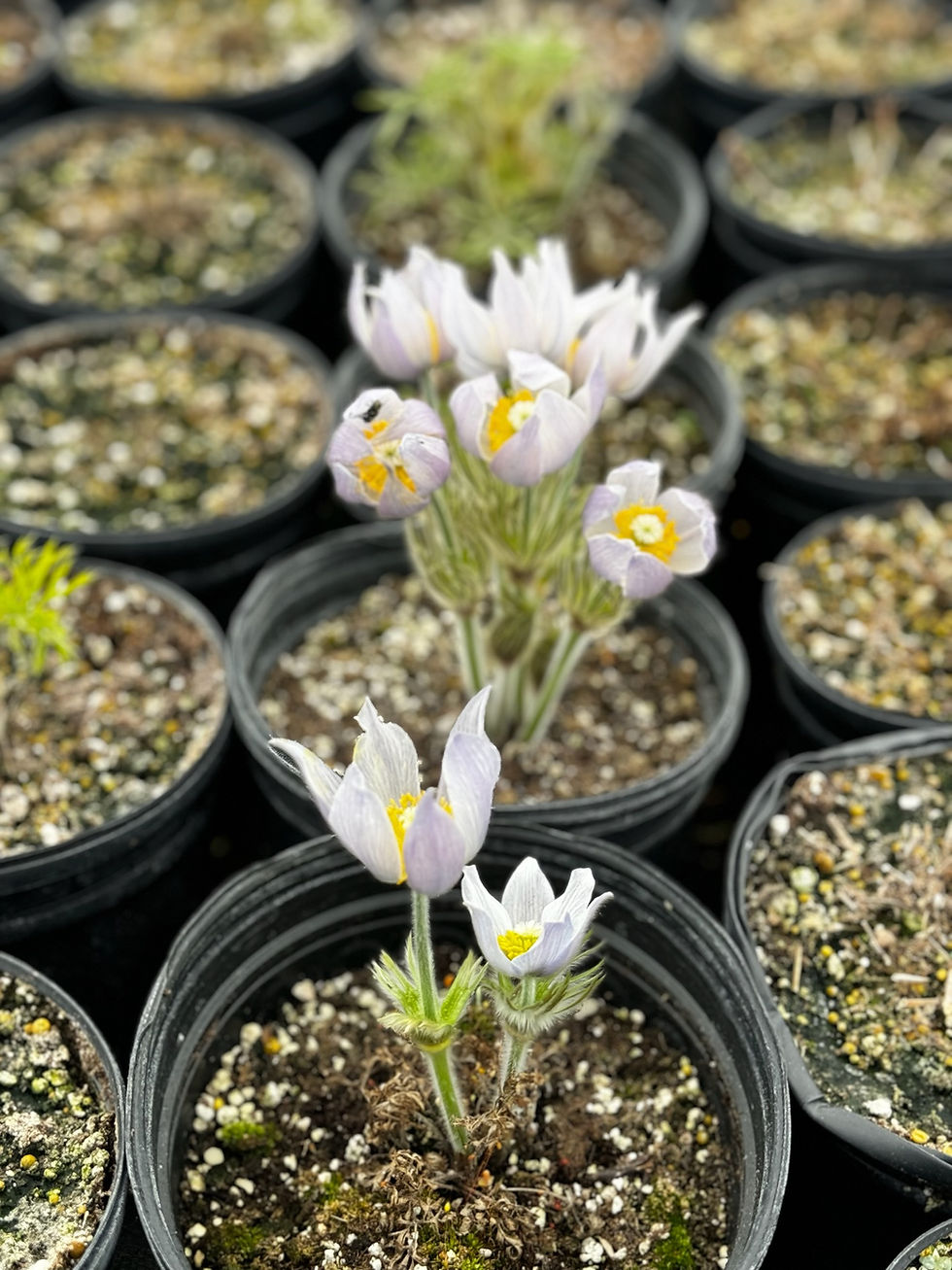Featured Plant - Black-Eyed Susan
- Rosie Reynoso

- Aug 16, 2024
- 3 min read
Updated: Jan 6

The Black-Eyed Susans (Rudbeckia hirta) are in full bloom here at Great Bear Native Plants, neighborhood gardens, and native meadows across the U.S. This biennial puts on a vibrant floral display in its second year, completing its life cycle. Known for its bright, showy blooms, the Black-Eyed Susan is easy to grow and has a long flowering period that draws in butterflies and other pollinators. Its late-season seed heads provide food for finches and other birds. Highly drought-tolerant, this plant thrives in heat and a variety of soil types, although it prefers well-drained conditions. It’s commonly found in prairies, meadows, pastures, savannas, and woodland edges.

The flower’s name is rooted in an Old English poem entitled, "Black-Eyed Susan," written by the celebrated poet, John Gay. The scientific name, Rudbeckia hirta, honors the famous Swedish botanists, Olof Rudbeck and his son, who were influential in science and botany. The Black-Eyed Susan has been the official state flower of Maryland since 1918.

Appearance:
A true hallmark of prairies and meadows, the Black-Eyed Susan is easily recognizable by its vivid yellow ray florets circling a prominent dark brown dome-shaped center filled with small disc flowers. The composite flowers, measuring 2-3 inches across, sit atop sturdy, upright stems that can grow 1-3 feet tall. The stems and oval-shaped leaves are covered with bristly white hairs, giving the plant a unique textured look.
Benefits of Black-Eyed Susan
Wildlife Support: Attracts birds, butterflies, and various pollinators.
Larval Host Plant: Supports caterpillars of the Silvery Checkerspot, Wavy-Lined Emerald, Gorgone Checkerspot, and Bordered Patch butterflies.
Nectar Source: Provides nectar for bees, butterflies, and other insects; seeds are favored by granivorous birds.
Deer Resistant: Naturally resists browsing by deer.
Ornamental and Medicinal Uses: Native Americans used the plant medicinally, internally and externally. The roots were used to brew a tea for treating colds and worms. Additionally, the plant was used externally for treating sores, snakebites, and swelling.
Planting Notes
The Black-Eyed Susan grows well in a variety of soil types, including clay, loam, and sand, and thrives in dry to medium moisture levels. It prefers full sun but can also tolerate partial shade.
Blooming from June through September, it is highly drought-tolerant and thrives in well-drained soils. While easy to grow, it can become aggressive in ideal conditions with minimal competition.
These flowers are typically biennial, flowering in their second year. However, if you start seeds indoors 6 weeks before the last frost, they can bloom in the first year. While some plants may return for a few more seasons, they are often short-lived perennials, so enjoy them when they do!
Planting Buddies
Black-Eyed Susans pair beautifully with other pollinator-friendly plants, making it easy to create a low-maintenance garden or wildlife-friendly landscape. When selecting companion plants, choose those with similar care requirements—well-draining soil, full to partial sun, and average moisture levels. Excellent choices include:
Tufted Hairgrass (Deschampsia cespitosa)
Elderberry (Sambucus racemosa)
Yarrow (Achillea millefolium)
Prairie Dropseed (Sporobolus heterolepis)
Prairie Coneflower (Ratibida columnifera)
All these companions are grown right here at Great Bear Native Plants to help you build the perfect garden! Thank you for reading, please enjoy this photo of the greenhouse cat with some Black-Eyed Susans.

Sources:




Comentários